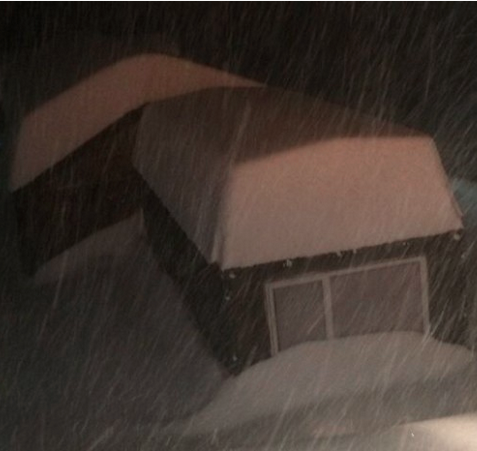Aspen Skiing Company has found a creative solution to the affordable housing crises for ski area employees. The company is “on trend” with their own Tiny House Movement.
This year they are expanding their project as well as making it cheaper fore employees. Last year they had 6 Tiny Homes that were each two bedrooms. This year they have ordered 34 tiny homes that are each three bedrooms.
“Seasonal workers’ feedback last season said that the units need to be even less expensive. Skico charged $600 per month per person, including utilities, for the six original tiny houses, which each slept two people.
The new models are configured for three people so the rate will be reduced to $450 per person.” said Philip Jefferys who was appointed last year to assess the companies needs and make a plan for housing.
The tiny homes are RV style units parked at Aspen Basalt Campground in the community of Basalt. Skico bought the Aspen Basalt campgound in 2006. The 6.6-acre campground was operated as a KOA. The residents that lived there were paying around $750 a month for the space and utility hookups. Skico then incentivized residents to move so they could do up keep on the property and prepare it for employee housing
Owners of Aspen Mountain, Aspen Highlands, Snowmass and Buttermilks, known locally as SkiCo. is looking into the future and anticipating the needs of their workforce.
The Aspen Times published an article in September 2016 about issues regarding the Aspen Snowmass workforce including; the housing shortage and the aging workforce that will further exacerbate that issue.
Aspen has around 3,800 employees, 2,400 of which are seasonal and 1,400 who are year-round employees, including 400 salaried employees. 1,200 employees will be eligible for retirement within 10 years, which will beg the question; Where do all the new employees live?
“Skico’s 12 housing locations between Aspen and Carbondale account for 596 beds, which include 389 seasonal beds and 207 long-term rentals,” said David Corbin, SkiCo’s Vice President of Planning and Development.
Current housing options owned by the resort are listed here for employees.
“The addition of the 34 units — 102 beds — boosts Skico’s inventory of beds that it owns by about 20 percent,”Jeffreys said in an article by The Aspen Times.
This still leaves the company about 500 beds short.
Many ski areas across the nation deal with similar housing shortage issues. Places like Lake Tahoe, CA/NV with its multiple resorts has rising housing costs that have pushed out employees of the resorts into neighboring communities with longer commutes but lower costs of living. Jackson Hole, WY also is known for its housing problems and has a large portion of their workforce living over the border in Idaho and commuting on dangerous roads for over an hour everyday to get to work.
Resorts across the nation now have a very progressive model to reference from Aspen when looking at their own employee housing woes.
The bigger picture also shows us that commuting workers adds to the ever increasing traffic problems in resort areas. This problem will only increase with the expansions and developments planned for many ski resorts.




